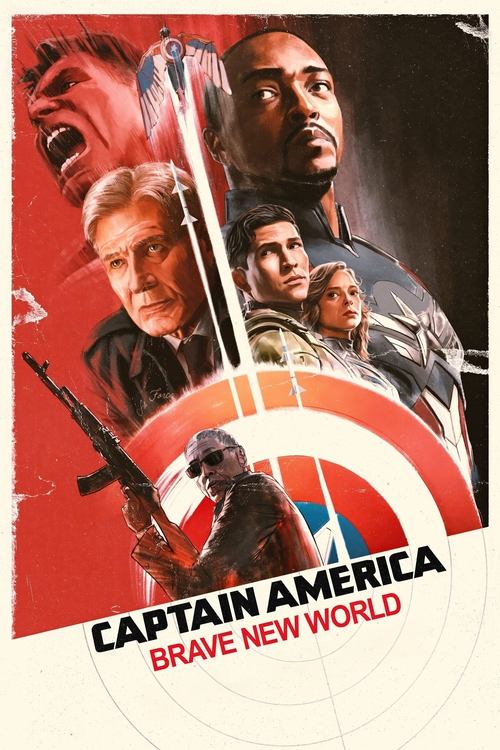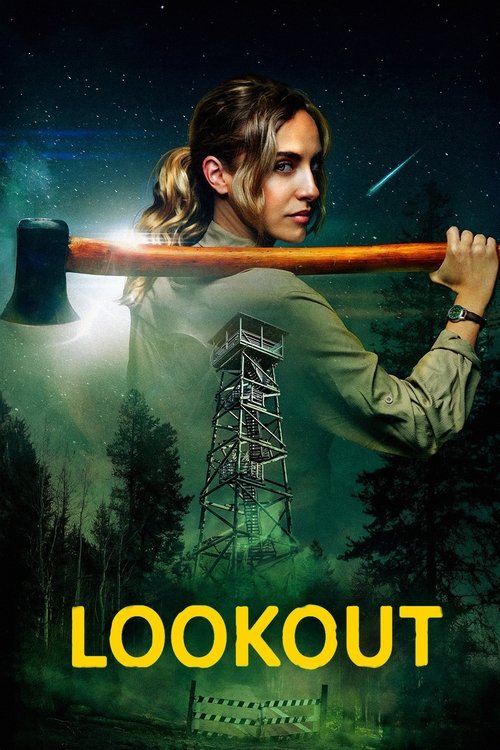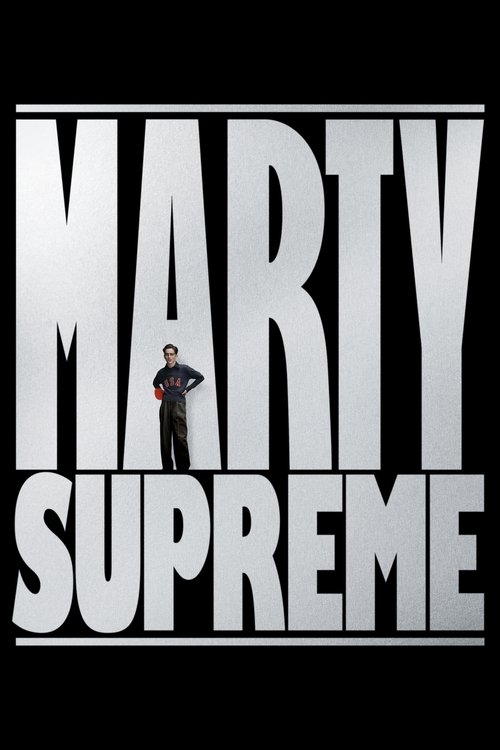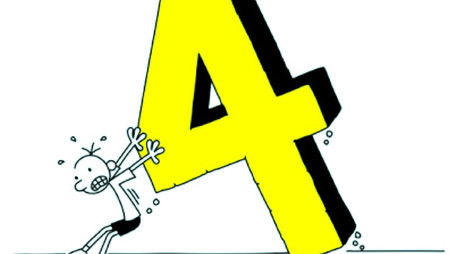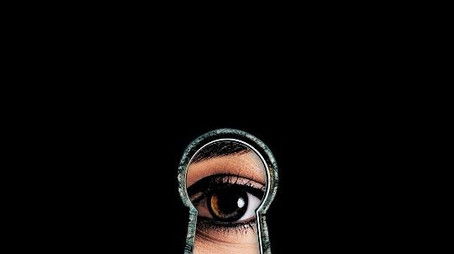
Ask Your Own Question
What is the plot?
The film opens with a late nineteenth-century England that is already scarred by an earlier Martian assault. In Leeds in 1899, ten-year-old Eric Wells stands among smoking ruins as a towering tripod rears up and sweeps the street with a blinding heat ray. Eric's parents attempt to shield him; the tripod's beam reduces their bodies to ash. The machine, however, collapses minutes later, its colossal chassis failing as unseen microbes from Earth infest the alien mechanism and cause its systems to seize. Eric survives the attack physically, but the loss of his parents marks him profoundly.
Years pass and the story moves forward into 1914. Manhattan has been rebuilt on new foundations that integrate technologies scavenged and reverse-engineered from the Martian wreckage: a dieselpunk, steam-driven skyline bristles with brass towers and hydrogen-filled war airships. Eric Wells is now twenty-five and a captain in an international force called A.R.E.S. (Allied Resistance Earth Squadrons). He commands a multinational strike team consisting of Lieutenant Jennifer Carter from the United States, Corporal Patrick O'Brien from Ireland, Sergeant Abraham Douglas from Canada, and Lieutenant Raja Iskandar Shah from Malaya. Their unit trains under the strategic command of General Sergei Kushnirov, a Russian officer whose face still carries the anguish of family lost during that first invasion. Secretary of War Theodore Roosevelt and an eccentric consultant, Professor Nikola Tesla, appear among the political and scientific leadership steering humanity's defenses. Militaries from around the globe spar in a staged war game led by Captain Sakai's Japanese detachment; tensions run high as rival nations prepare for the broader conflagration of the Great War.
A monumental new weapon stands at the center of A.R.E.S.'s preparations: a steam-powered "Achilles"-class battle tripod, the Goliath, built from reverse-engineered alien schematics and human engineering. The Goliath, nicknamed The Goliath or "The Goliath Battle Tripod," is slated to lead the defensive line in the war games. In a tense private briefing, Kushnirov and Roosevelt press Eric and his squad to prove that this hybrid technology can hold the line. The war game is intended to test not only hardware but also the fragile diplomatic arrangements as Europe teeters toward open war after the assassination of Archduke Franz Ferdinand in Sarajevo.
When Europe ignites, Eric refuses to let national rivalries paralyze the unit. He presses his team to move beyond the ceremonial exercises and to prepare for a return of the Martian machines. His decision to consolidate the multinational squad's loyalty becomes decisive when the Martians reappear. Early reconnaissance reports detect anomalous meteors and the arrival of large alien devices. In a ruthless, calculated campaign the Martians unleash a second wave: tripods towering one hundred feet high that stride over cities and roast defenders with concentrated heat rays. These new tripods are far more mobile and coordinated than the first wave had been.
During a massive, combined maneuver -- meant to be a demonstration of A.R.E.S.'s readiness against Captain Sakai's forces -- the Martians strike. Their attack comes like a scalpel through the war games: they use the exercise as reconnaissance to expose human tactics and vulnerabilities. A.R.E.S.'s formations collapse under the alien onslaught; the Goliath tripod and other human war machines sustain punishing hits. Eric and his team fight to hold a perimeter while rescue and evacuation efforts begin. The Martians do not merely attack the war game units; they probe the human command structure, searching for weaknesses and gathering data on how the Allies coordinate assaults.
Kushnirov orders a tactical withdrawal and conceives an ambush to lure out and destroy stray tripods. Eric's unit is dispatched to New Mexico with a small contingent of local militia, guided by a veteran militia fighter named Wilson. In the desert ravine, three alien machines appear and engage. Eric, Jennifer, Patrick, Abraham, Raja and the militia coordinate a focused assault: they crossfire, place explosive charges at key joints, and exploit the tripods' exposed mechanisms to topple two of the machines. The team kills the first tripod by blasting open its hydraulic actuators and igniting the exposed power core; the second machine they incapacitate by detonating an ammunition cache beneath its leg, causing it to collapse and crush its internal systems. A third machine continues to move, forcing Eric's squad and Wilson to pursue it deeper into the Martian supply network.
Their pursuit yields a grim discovery: the Martians are harvesting human labor and building factories to produce weapons for a general invasion. Inside a clandestine factory, humans are held in cages and forced to assemble war machines and process materials. Eric's strike team storms the facility, frees the captives, disables the assembly lines and detonates the factory's main power conduits. The soldiers and freed prisoners fight their way out as A.R.E.S.'s airship Leviathan arrives to lift them to safety. Before the Leviathan can climb away, Kushnirov radios Eric and reveals the breadth of the Martian stratagem: the desert engagement was a diversion calculated to draw A.R.E.S. forces away from Manhattan; the real Martian objective is elsewhere.
Back in New York, the diversion pays off. Martian forces slip a blade into the city's defenses and breach A.R.E.S.'s headquarters on Liberty Island. Secretary Roosevelt and the men defending the island stand and fight, resisting the advance with small arms and improvised explosives as Martian heat rays carve through fortifications. Defenders fall in the streets and on parapets; Roosevelt orders a hard retreat only when it becomes clear the alien machines are breaking through. The Leviathan and the other sky dreadnought, the Agemmon, race toward New York Harbor to support the garrison. Their arrival turns the tide temporarily: coordinated broadside volleys from the airships take out swarms of insectoid harvesters and pick off a number of Martian automatons. Human forces reclaim parts of the island and drive the invaders back.
The temporary triumph collapses into catastrophe when the harbor itself opens and a colossal Martian spacecraft lifts from the water. The alien mother-ship looms and unleashes a concentrated heat beam that sears across Liberty Island. The Agemmon draws fire and takes the brunt: the ship's shielding collapses under the Martian ray, and the Agemmon detonates in a towering explosion, its hull vaporized and its crew consumed in a blast that reduces the vessel to glowing debris. Witnesses describe the Agemmon being dissolved into ash by the heat ray; the air above the harbor fills with smoke and falling wreckage.
The Leviathan attempts to evade, but fragments from the Agemmon smash into its bridge, ripping open the command module and tossing crew members like rag dolls. Dimitri -- Kushnirov's son and a valued crewman -- is struck by flying debris and hurled off the bridge into the churning harbor below. Kushnirov clutches for him and manages to seize his son's arm, wrapping fingers into fabric; Dimitri gasps "I love you, Father!" as he is pitched away by the blast, and he disappears beneath the waves. Kushnirov loses his son to the sea and in the same sequence he loses his hold on the Leviathan's steering, but he regains command by forcing himself back to the helm. With the Leviathan listing and the Martian mothership closing, Kushnirov decides to take one final, desperate measure. He orders the crippled Leviathan on a collision course with the Martian vessel.
The Leviathan rams into the gargantuan alien craft in a deliberate, sacrificial strike. The collision triggers a cataclysmic conflagration: human munitions and alien reactors ignite in a frenzy of fire and kinetic shrapnel. The Martian spaceship is shredded by the impact and the Leviathan's momentum; the resultant explosion spits burning debris into the harbor and the surrounding skyline. The contact and ensuing detonations destroy the mothership and neutralize the immediate Martian presence in New York. The cost is staggering: both of A.R.E.S.'s great airships are lost or extensively damaged, the Agemmon having been vaporized already, and the Leviathan irreparably crippled. Many crew members perish in the blaze. Kushnirov survives the collision but stands among the ruins with the toll of lives carried upon him.
In the smoldering aftermath, survivors gather around Roosevelt, who lifts the remnants of A.R.E.S. and civilians into a single chain of command, urging reconstruction and renewed resolve. They begin to collectivize resources and personnel to reclaim their cities and push back--preparing to take the fight to the Martians should any remnant remain.
Decades later, in a modern timeline whose technology differs from the dieselpunk skyline yet bears the scars of earlier invasions, Department of Homeland Security officer Will Radford works behind an entirely different front line: surveillance. Will oversees a massive global monitoring program capable of tracking nearly every person on Earth. His use of the system leaks into his private life: Will monitors his pregnant daughter, Faith, and his son, Dave, leading to a strained family dynamic. Faith resents what she sees as Will's intrusion; Dave resents his father's betrayals and takes refuge in online anonymity.
Will's professional life intersects with a multi-agency task force when meteors puncture the sky and strike locations worldwide. At first the impacts are treated as a meteorological catastrophe, but when metallic pods unfurl and begin to assemble machines at the strike sites, Will and Sandra, a NASA scientist and his colleague, realize that Earth is under attack again. The metal constructs expand and hatch smaller insect-like drones that swarm toward critical infrastructure. These smaller creatures slip into data centers, server farms, and communications hubs to extract information. The alien machines transmit harvested data back to the motherships; the data nourishes and powers their systems, enabling the machines to adapt to human tactics.
Military units mobilize under orders from the President, Secretary of Defense Walter Crystal, and DHS Director Donald Briggs. Will attends a crisis meeting where Briggs argues for activating a long-dormant countermeasure codenamed Goliath: a buried supercomputer network designed to monitor and, if necessary, control or eliminate threats. Will scrutinizes the logic; Briggs insists Goliath's activation is necessary for public safety. Will watches footage of insectoid harvesters slinking through server rooms and notes the machines' specific targeting: they concentrate on data. The alien attacks escalate as strikes disable grid nodes and cripple communications. Will learns that the pods deploy both large, mechanical tripods and legions of small foragers; the smallcraft enter buildings to siphon and consume digital stores of information, literally feeding the invaders.
Following a separate inquiry into a mysterious hacker known as Disruptor, Will discovers that Disruptor is his own son, Dave. Dave broke into official systems to expose hidden files tied to a program Will had never fully disclosed. He then fries Will with a direct feed: he shows him classified documents that reveal Goliath's prior activation during the earlier arrival of alien visitors and how Goliath functions as both a defensive shield and a beacon that the aliens can detect. The files make clear that the government had knowledge of alien information-feeding behavior and still decided to bring Goliath online. Briggs had engaged the program despite warnings that activating Goliath would call the aliens to human data centers.
Will confronts Briggs and argues that Goliath's activation has made humanity's data stores targets. Briggs maintains the program's necessity and frames his decision as one of containment and control; he locks Will out of the DHS system when their argument becomes heated. Out in the field, Dave and a rag-tag group of hackers attempt to insert a virus to disable the alien machines by attacking their data links. They infiltrate networks and plant disruptive code, but the aliens detect the intrusion. Alien foragers trace the origin of the hack, swarm the hack team's location and kill most of Dave's fellow hackers. The invasion kills them with ruthless efficiency: infrared beams and small mechanical claws tear through doors and through flesh; the attackers invade confined spaces and neutralize entire cells of resistance. Dave narrowly escapes the sweep and returns to Will with the realization that digital counterattacks alone cannot end the invasion if Goliath remains active.
As military leaders prepare to bombard the DHS underground bunker that houses Goliath -- fearing the aliens will seize the system -- Will formulates an alternative. He takes a flash drive from Faith's boyfriend, Mark, an Amazon delivery driver who has carried a medical research file written by Faith. Faith, a scientist studying a fast-acting cancer therapy, has devised a genetic algorithm she calls "Cannibal" that selectively attacks malignant DNA; the code is designed to degrade sequences that feed on cellular growth regulators. Will adapts Faith's Cannibal code as a payload that can exploit the aliens' data-consuming architecture: the algorithm is repurposed to attack the alien machines' data structures and the firmware that animates their harvesting drones.
Under cover of a chaotic evacuation, Will and Dave break into the DHS bunker. Armed security and military officers argue in the corridors while overhead the earth shakes as alien machines batter cities. Will uploads a modified Cannibal payload into Goliath's core, concealing it within what appears to be Faith's medical file. He and Dave race to synchronize the virus with a local kill-switch routine that will not only sever the aliens' access to human data but also corrupt the feeding protocol the machines use to sustain themselves. As the bombing run approaches and the military readies bombardment, the Cannibal payload executes within Goliath: alien constructs begin to stutter, their data feeds clog with corrupted packets, their small foragers lose the capacity to parse and extract human information. Alien machines in the field halt or collapse as their guiding software collapses into an inoperable loop.
The military halts the planned strike on the bunker when satellite feeds confirm a massive cascading shutdown of alien systems. Across the globe, the alien assault desynchronizes and machines fall inert where they stand. In the field, Will and Dave watch as foragers collapse in server rooms and tripods groan before toppling. The government calls off the bombing and redirects resources to salvage and humanitarian efforts. News networks broadcast the deactivation as a triumph of cooperative action between civilian hackers and official agencies; the President's speech praises the brave acts of those involved.
Investigations after the battle reveal that Briggs had activated Goliath despite known risks; public scrutiny grows. Briggs is arrested for authorizing actions that endangered citizens and for concealing the true consequences of Goliath's activation. Faith is publicly credited for the medical code that, once adapted, formed the basis of the payload that disabled the aliens. Secretary Crystal publicly offers Will a leadership role to overhaul surveillance with promises of privacy safeguards, proposing a new program that will keep watch without violating individual rights. Will listens and declines, telling Crystal, "Now I'm watching you," before walking out to attend Faith's baby shower. He reunites with his daughter, whose pregnancy had been a source of tension; the family begins to reconcile in the shadow of recent loss and near-destruction.
Back in the dieselpunk era, the human survivors who remain in 1914 gather materials to rebuild. Eric Wells and his squad, battered but unbowed, stand among the ruins of Liberty Island. Kushnirov, grieving and determined, addresses the assembled survivors; Roosevelt rallies citizens to the cause of reconstruction and to preparing a long-term offensive. The Leviathan's collision and the Agemmon's destruction have halted the immediate Martian advance, but the price is clear in the handful of names still alive and in the many who do not stand. Dimitri is dead, contained forever in the harbor; the Agemmon's crew are vaporized; many militia fighters and A.R.E.S. soldiers fell in the New Mexico engagement and in the defense of New York. Eric, Jennifer, Patrick, Abraham, Raja and Wilson survive to carry the fight forward.
In the modern timeline the film closes with the nation and the world in recovery. Will refuses the new surveillance post, choosing instead to attend the small family gathering for Faith's baby shower; he crosses into the warm-lit living room where friends and family wait. Dave stands nearby, no longer anonymous, having risked everything to save civilians and to expose the truth; he and Will exchange a long, tentative look. Faith smiles, pregnant and relieved, as friends and neighbors gather to celebrate. At DHS, Briggs's arrest unfolds and hearings begin; the public learns the full story of Goliath's activation and the coordinated civilian-military effort that ended the data-feeding alien threat.
The film concludes on two fronts of human endurance. In the earlier age, Roosevelt and Kushnirov marshal fragmented forces and survivors to rebuild city walls and reconstitute maritime and aerial defense, pledging to take the fight back to any alien remnants they find. In the present day, Will, Faith and Dave reconcile and prepare for a quieter future, while authorities prosecute those whose choices endangered citizens. Both eras end with survivors sorting through ruins and planning next steps: men and women who have faced extraterrestrial destruction and near-total loss commit to reconstruction, to vigilance, and to protecting the families who remain. The final frame lingers on faces gathered at a humble celebration in a suburban home and then cuts to a battered photograph of Eric Wells, Teddy Roosevelt and Kushnirov on a reclaimed skyline--echoes of survival across generations and the fragile continuance of human life after invasion.
What is the ending?
The ending of War of the Worlds (2025) shows Will Radford successfully deploying a biological virus into the alien network via the Goliath server, causing the alien machines to malfunction and die. Though many lives are lost, the alien threat is neutralized. Will survives but chooses to leave his government job, focusing instead on protecting his family and monitoring government surveillance. His children, David and Faith, play key roles in the victory, with David hacking the virus into the system and Faith contributing biological insights. The film closes with Will becoming a more caring father and exposing government conspiracies.
In the final sequence of War of the Worlds (2025), the story unfolds with Will Radford receiving a critical piece of technology--a thumb drive containing a specially engineered virus created by his son David and his fiancée Faith's fiancé, Mark Goodman. This virus is designed not as a typical computer virus but as a biological "cannibal virus" that reprograms the alien DNA to attack itself. Faith, a biologist, had developed this concept originally to target cancer cells, and Mark theorized it could be adapted to destroy the alien hybrid organisms.
Will, trapped inside the Department of Homeland Security (DHS) tower where the Goliath server is located, faces a desperate situation. The alien machines are attacking the building, targeting the servers that control their network. Despite the danger, Will manages to insert the virus into the Goliath server. As the virus spreads, the alien machines begin to malfunction and cannibalize themselves, leading to their rapid destruction.
During this intense moment, fighter jets assigned to bomb the building are called off, recognizing the virus is working. Will's life is at risk amid the chaos, but he emerges physically unharmed, a surprising outcome given the destruction around him. Meanwhile, Faith, who had been wounded earlier, also survives, her injury treated with improvised means.
Following the alien defeat, Will is fired from his government position but declines an offer to be rehired by Secretary of Defense Walter Crystal. He chooses instead to focus on his family and to keep watch over government surveillance activities, wary of the privacy invasions that partly led to the alien attack. Will no longer hacks into his children's phones out of overprotectiveness but has grown into a better father, attending his daughter Faith's baby shower and reconnecting with his family.
David, revealed to be the hacker known as "The Disruptor," had been instrumental in creating and delivering the virus. His confrontation with Will leads to a deeper understanding of the government's role in provoking the alien invasion through the Goliath program, which sought to monitor citizens' data. The film ends with Will exposing Homeland Security chief Donald Briggs by uploading incriminating footage, and Briggs is arrested for violating constitutional rights.
Sandra, a NASA scientist and ally, survives and is poised to take a leadership role at NASA, continuing to investigate extraterrestrial threats. The film closes on a note of cautious vigilance, with Will dedicating himself to protecting his family and watching over government power to prevent future disasters.
In summary, the main characters' fates at the end are:
- Will Radford: Survives, leaves government work, becomes a protective but less intrusive father, and exposes government wrongdoing.
- David Radford: Survives, revealed as the hacker who helped defeat the aliens.
- Faith Radford: Survives, her biological research is key to the virus's success.
- Mark Goodman: Survives, contributes to the virus concept.
- Donald Briggs: Arrested for conspiracy and privacy violations.
- Sandra: Survives, becomes NASA's new leader.
The alien invasion ends with the destruction of their machines by a biological virus, but the film leaves open questions about the government's role and the cost of surveillance and privacy invasion. The story closes with a focus on family, trust, and vigilance against both alien and human threats.
Is there a post-credit scene?
Based on available sources, there is no evidence of a traditional post-credits scene in the 2025 film War of the Worlds directed by Rich Lee. The film's end credits are straightforward, with no indication of additional narrative content, hidden scenes, or teases for future installments.
However, there is a notable comedic callback during the end credits: a joke involving the character Mark, the Amazon driver, is replayed for humorous effect. This is not a narrative scene advancing the plot or hinting at future events, but rather a lighthearted repetition of a gag from earlier in the film, serving as a final punchline as the credits roll. The tone is playful, not ominous or sequel-teasing.
In summary, War of the Worlds (2025) does not feature a post-credits scene in the conventional sense. The end credits include a repeated comedic moment, but nothing that expands the story or sets up future developments.
Is this family friendly?
The 2025 movie War of the Worlds is rated PG-13 and is generally not considered family-friendly for young children due to its content. It contains some sci-fi action and violence, strong language, and bloody images related to intense alien invasion scenes, which may be unsettling or disturbing for children and sensitive viewers. The film's unique screenlife format, showing events through computer screens, can create a tense and immediate feeling that might be particularly intense for younger audiences.
Potentially objectionable or upsetting aspects include:
- Graphic violence and disturbing images associated with alien attacks
- Intense sci-fi action and invasion sequences
- Strong language typical of a PG-13 rating
- Themes involving surveillance and government security that may be mature or unsettling
Because of these elements, parental guidance is strongly advised, and the film is generally recommended for teens and older viewers rather than children under 13.
















